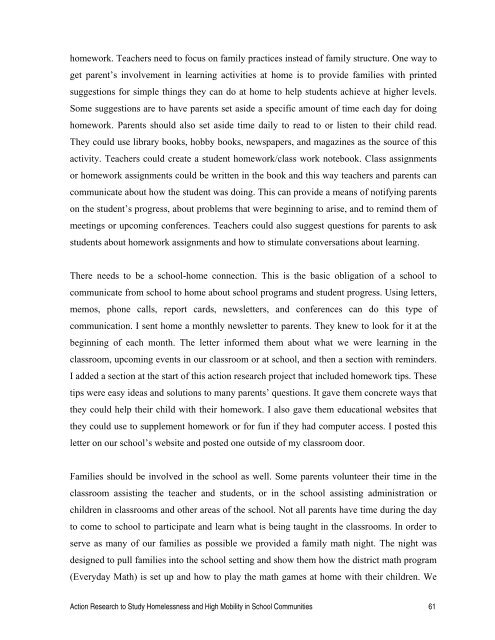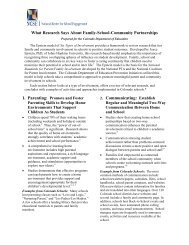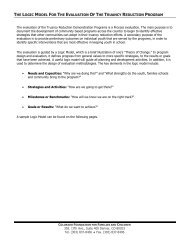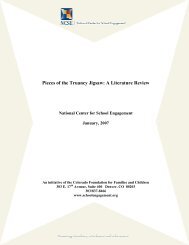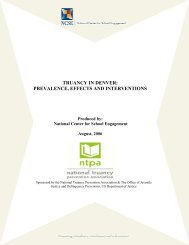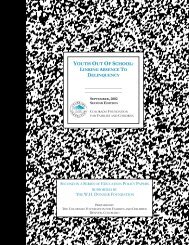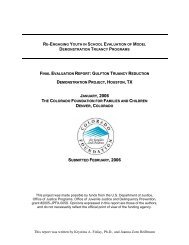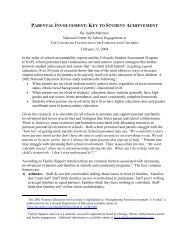Section 1: Academic Achievement - National Center for School ...
Section 1: Academic Achievement - National Center for School ...
Section 1: Academic Achievement - National Center for School ...
Create successful ePaper yourself
Turn your PDF publications into a flip-book with our unique Google optimized e-Paper software.
homework. Teachers need to focus on family practices instead of family structure. One way to<br />
get parent’s involvement in learning activities at home is to provide families with printed<br />
suggestions <strong>for</strong> simple things they can do at home to help students achieve at higher levels.<br />
Some suggestions are to have parents set aside a specific amount of time each day <strong>for</strong> doing<br />
homework. Parents should also set aside time daily to read to or listen to their child read.<br />
They could use library books, hobby books, newspapers, and magazines as the source of this<br />
activity. Teachers could create a student homework/class work notebook. Class assignments<br />
or homework assignments could be written in the book and this way teachers and parents can<br />
communicate about how the student was doing. This can provide a means of notifying parents<br />
on the student’s progress, about problems that were beginning to arise, and to remind them of<br />
meetings or upcoming conferences. Teachers could also suggest questions <strong>for</strong> parents to ask<br />
students about homework assignments and how to stimulate conversations about learning.<br />
There needs to be a school-home connection. This is the basic obligation of a school to<br />
communicate from school to home about school programs and student progress. Using letters,<br />
memos, phone calls, report cards, newsletters, and conferences can do this type of<br />
communication. I sent home a monthly newsletter to parents. They knew to look <strong>for</strong> it at the<br />
beginning of each month. The letter in<strong>for</strong>med them about what we were learning in the<br />
classroom, upcoming events in our classroom or at school, and then a section with reminders.<br />
I added a section at the start of this action research project that included homework tips. These<br />
tips were easy ideas and solutions to many parents’ questions. It gave them concrete ways that<br />
they could help their child with their homework. I also gave them educational websites that<br />
they could use to supplement homework or <strong>for</strong> fun if they had computer access. I posted this<br />
letter on our school’s website and posted one outside of my classroom door.<br />
Families should be involved in the school as well. Some parents volunteer their time in the<br />
classroom assisting the teacher and students, or in the school assisting administration or<br />
children in classrooms and other areas of the school. Not all parents have time during the day<br />
to come to school to participate and learn what is being taught in the classrooms. In order to<br />
serve as many of our families as possible we provided a family math night. The night was<br />
designed to pull families into the school setting and show them how the district math program<br />
(Everyday Math) is set up and how to play the math games at home with their children. We<br />
Action Research to Study Homelessness and High Mobility in <strong>School</strong> Communities 61


